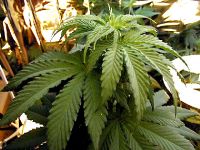Marijuana Abuse
- Dangers of Marijuana Abuse
- How Many People Abuse Marijuana
- Marijuana Abuse Effects
- Marijuana Abuse In America
- Marijuana Abuse Signs
- Marijuana Abuse Statistics
- Who Abuses Marijuana
- Causes of Marijuana Abuse
- Long Term Marijuana Abuse
- Marijuana Abuse Facts
- Marijuana Abuse Teens
- Treatment for Marijuana Abuse
- Teen Marijuana Abuse
- Chronic Marijuana Abuse
- How Much Does Marijuana Cost
- Marijuana Abuse Dependance
- Marijuana Plant Pictures
- Marijuana Strains

 Marijuana Abuse Statistics
Marijuana Abuse Statistics
Marijuana abuse statistics show that without a doubt, marijuana is the most popular illicit drug abused in America. It has retained its popularity through decades, although recent surveys show that its use is declining overall.
Marijuana abuse statistics point out that this drug has been used as a medicine, as a part of religious ceremonies, and even as a fiber for making clothing, rope, and paper for many thousands of years. It has also been used recreationally in many cultures, both ancient and modern. Still, its effects on the brain and body are not yet completely understood. Scientists differ on how to classify the drug. They argue if it is a hallucinogen like LSD (lysergic acid diethylamide), a narcotic like opium, or does it belong in a class by itself?
To further confuse matters, marijuana abuse statistics show that some scientists call marijuana a stimulant, or a substance that makes the brain and body more active. Some call it a depressant or a substance that slows down brain and body processes. Whatever its properties, organic or plant-derived marijuana is illegal to possess or sell as a recreational substance.
Marijuana is so popular (39.8 percent of the U.S. population has tried marijuana at least once) in part because it is regarded as a relatively "safe" drug. However, efforts to educate youth about marijuana abuse may be contributing to its slight decline.
Marijuana abuse statistics report that marijuana use is most common among young adults aged 18-25. More than 16 percent have used marijuana in the last month. In this age group, reports the National Survey on Drug Use and Health, marijuana is most popular with college students. The Centers for Disease Control report that 30.2 percent of college students have used marijuana in the past year.
Marijuana abuse statistics note that marijuana use is trending down in this segment of the population. Last year college student use was down from 33.3 percent in 2005. Young adults as a whole (this number includes college students) report a drop from 28.2 percent last year use to 27.7 percent.
Like marijuana use among college students and young adults, marijuana abuse statistics have found that marijuana use is dropping overall with high school students. Here are some of the numbers, according to the Monitoring the Future survey:
- 8th graders: Past month use down to 5.7 percent in 2007 from 6.5 percent in 2006. Also, use at least one time has dropped from 15.7 percent in 2006 to 14.2 percent in 2007.
- 10th graders: Past month use has remained stable at 14.2 percent, but lifetime use has dropped slightly, from 31.8 percent in 2006 to 31.0 percent in 2007.
- 12th graders: This is an interesting age group, since it is the only group that has seen an increase in marijuana use over the past month, from 18.3 percent in 2006 to 18.8 percent in 2007. However, those that have tried it once in a lifetime have actually dropped from 42.3 percent to 41.8 percent.
- It is worth noting that most high school students think that smoking marijuana regularly constitutes a great risk. However, as high school students get older, they change their attitudes about marijuana use. Of 8th graders, 74.3 percent think that smoking marijuana regularly poses a risk. Amongst 12th graders, that number is 54.8 percent. Additionally, marijuana abuse statistics show that most high school students do not think that it is a problem to try marijuana once. Only 18.6 percent of high school seniors see problems associated with one time marijuana use.
